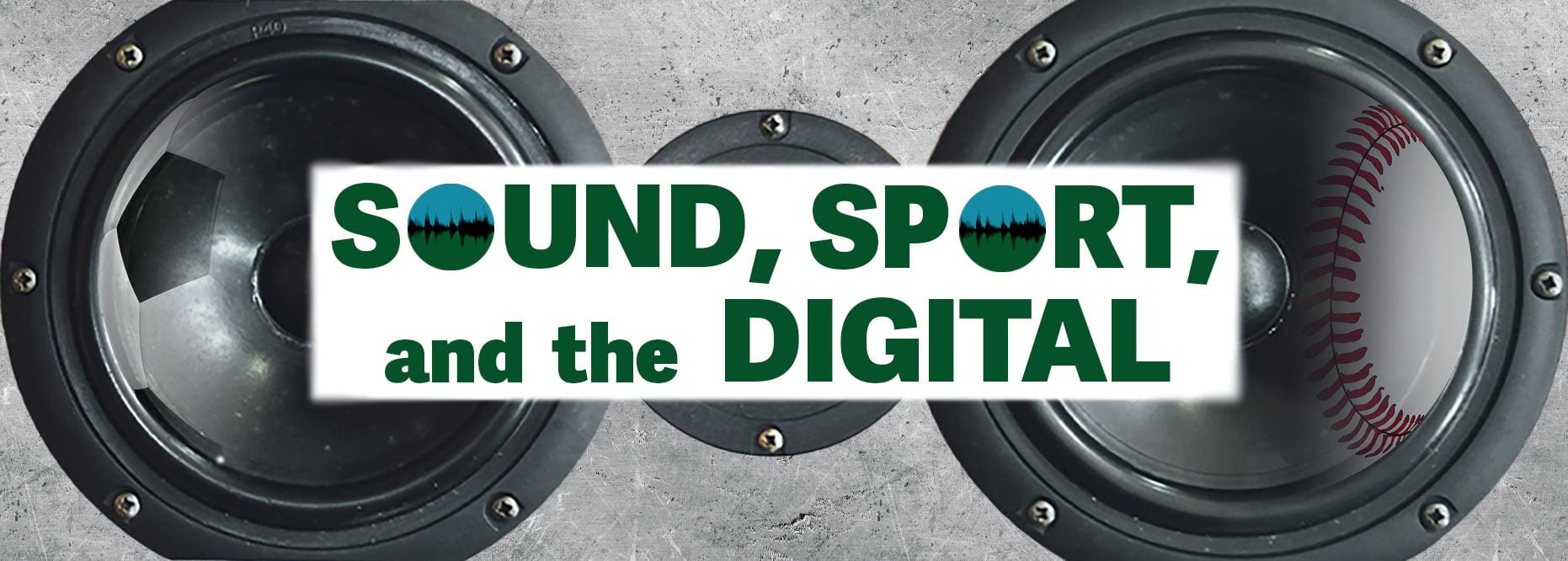
About Sound, Sport, and the Digital
How are sports shaped by sounds?
- How do sounds materialize through sports as auditory signifiers, noise, music, sensory feedback, vibrations, and multi-layered soundscapes?
- What might critical approaches to the study of sound and music offer sport scholars and creative practitioners?
- How can examinations of sports sounds inform questions around diverse embodiments while challenging dominant knowledges and social inequalities?
- How might digital methods of sound recording, editing, archiving, sharing, and listening facilitate opportunities for interdisciplinary, collaborative knowledge production? How are sports sounds intertwined with visual phenomena and representations?
- How are artists, musicians, media producers, and sport practitioners uniquely situated to develop new possibilities for exploring the sport/sound nexus?
Sound, Sport, and the Digital is a project dedicating to considering these and similar questions through a series of online events, curation of relevant resources to support explorations of the sound/sport nexus, and the promotion of interdisciplinary collaboration across academic, artistic, and athletic domains.
Why Sound and Sport?
Sound is a vital aspect of the multisensory experience of sports. Sports environments are multilayered soundscapes comprised of numerous familiar and often iconic sounds. Athletes, equipment, and playing surfaces make noise; as do officials, fans, announcers, and stadium sound systems. Auditory cues influence athletic performance while shaping how spectators participate in sporting events and how media audiences consume sports content. Music is ubiquitous in sports contexts and there is a wide spectrum of music about sports.
Sounds animate and enhance cultural representations of sports but are also valuable ways of knowing sports and the moving body. Sound offers distinct ways to understand athlete abilities and movements while recognizing and embracing difference across these embodiments. Examining sound makes us attentive to the material world of sports as sounds reverberate, echo, and resonate between bodies, objects, and surfaces. Critical listening reveals how sports spaces and representations are manipulated to include or exclude specific sounds. Such analyses can help us comprehend how sonic characteristics shape how sports make us feel and why certain sounds provoke emotional, visceral, and collective responses to sports experiences.
Sports sounds – and sports songs – are intertwined with identities. Books such as Bateman and Bale’s Sporting Sounds and McLeod’s We are the Champions illustrate how sport and music are often bound together by cultural and ideological interconnections. The North American Society for the Sociology of Sport’s (NASSS) 2018 annual conference was organized around the theme of “Sport Soundtracks“, which explored how the symbiotic relationship between sport and music can “forge communities, imbue national pride, and promote cultural identities.” Beyond musical forms, sounds are similarly expressions of power in how they reflect and are used to control whose bodies, voices, and cultures are thought to belong in sport and whose are deemed out of place.
For people experiencing ongoing oppression and violence, sound and music manifest as history, politics, resistance, and – as Katherine McKittrick writes – ways of being in the social world that are inextricable from the struggle for liberation. New, unexpected, or unruly sounds can thus destabilize what’s supposed to be “normal” in sports and challenge the oppressive practices upholding sports’ power imbalances. These disruptive sounds force us to confront the assumptions and biases informing how we listen to sports. A critical listening positionality, as defined by Stó:lō scholar Dylan Robinson, considers “how we might become better attuned to the particular filters of race, class, gender, and ability that actively select and frame the moment of contact between listening body and listened-to sound” (2020, p. 11). As Robinson explains, the unlearning of sensory perceptions shaped by settler colonialism, racism, capitalism, ableism, and sexism can defy and redefine unjust political orders.
Sound, Sport, and the Digital seeks to promote critical reflections on sound and listening that similarly support movements toward equity and justice in sports.
The Sound, Sport, and the Digital Working Group
The Sound, Sport, and the Digital Working Group is a collective of sport-focused scholars and artists with interests in how the sociocultural dynamics of sports can be explored through sound, music, podcasting, visual art, and multimedia experimentation.
Dr. Matt Ventresca (Georgia Institute of Technology / Australian National University)
Dr. Mary McDonald (Georgia Institute of Technology)
Dr. Akilah Carter-Francique (Benedict College)
Dr. Sam Clevenger (Towson University)
Mel Day MFA (San Jose State University)
Dr. Nik Dickerson (Loughborough University)
Dr. Marta Mack (University of Kentucky)
Dr. Oliver Rick (Regis College)
Dr. Robyn Smith (Loughborough University)
SPORT AND DIGITAL POSSIBILITIES
Sound, Sport, and the Digital is part of The Sport and Digital Possibilities Project, which facilitates the actions of a network of researchers and artists seeking to engage other scholars, students, and community members around critical and public-facing digital scholarship and practices related to sports, physical activity, and the moving body. The project embraces the use of digital tools and techniques while also critically engaging with their technological and social limitations.
Collectively The Sport and Digital Possibilities Project consists of 14 scholars and artists from North American and Britain with expertise in the digital humanities, sound studies, collective storytelling, podcasting, art, and visualizations. The project is fueled by three research-based working subgroups around sound, digital justice, and critical visualizations. Our goal is to host an online series of instructional webinars, collaborative seminars, and maker opportunities. These events have been envisioned as spaces to apply and develop creative digital methods to promote broader accessibility and justice in sport-focused research, art, and social activism. We also plan to build an asynchronous archive of materials related to these events. By doing so we hope to “scale up” disciplinary and public knowledge elaborating on the possibilities of the digital within sport and beyond.